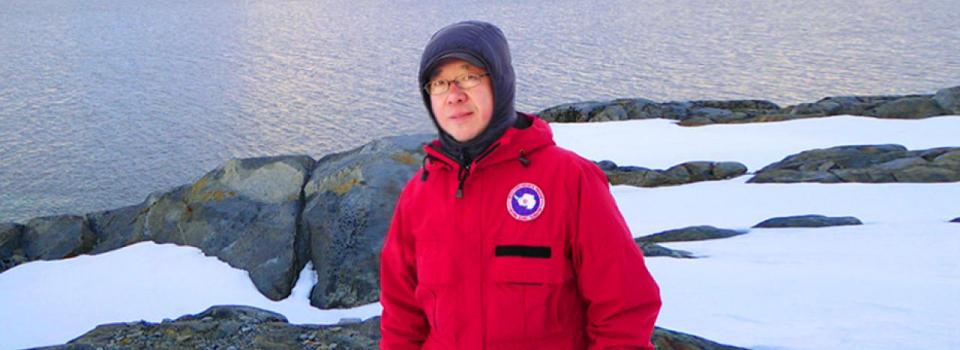Apr 21 2016
Published by
NYU Shanghai

For centuries, Antarctica, the land of ice and penguins, mysteries and extremes, has been drawing a growing stream of adventurers, now in the thousands. While many only imagine the extreme cold from their TV screens, Zhang Jun, professor of physics and mathematics at NYU Shanghai, flew across the globe, hopped on an icebreaker and embarked on an epic expedition to the remote continent.
At the end of 2014, Zhang and six fellow scholars stayed at the US Palmer Station on Anvers Island for a month and carried out a series of experiments on the hydrokinetic behaviors of local sea creatures. Professor Zhang also happens to be an amazing artist, and brought back a reel of sketches that portrayed the continent’s unique beauty and the team’s daily life. Read more.
Q: What’s the significance of Antarctica to you as a physicist? Can you give an interesting example of the experiments you did there?
Due to its remoteness, Antarctica is still not a fully-explored, well-charted territory. Scientists, including physicists, are eager to learn about its environment and ecosystem. All the research activities will help us better understand our planet's current state and its distant past, and better predict the future. Our focus was to study the locomotion of some small marine animals. We first collected them from the local waters and recorded their behaviors in the lab. These animals "worked” with us for a few days and were then released to their natural habitat.
Q: What was a routine “day” like at the Palmer station?
Palmer Station is quite small, only able to accommodate 44 people. Once you arrive there, you get to know everybody rather quickly. A typical day at the station starts with a rich breakfast and a short briefing with your small research group. It is then your decision about what to do that day: collecting samples in the open water, performing experiments in the aquarium, or documenting and analyzing what you have found in the lab. It's more like a typical lab in any research institute but time is alway running short (you have a very limited period of stay at the station) and the safety codes are much tighter. For instance, if you have to go up to the glacier that day, you need to leave your planned time of return on the scheduling board, loud and clear, and you have to carry at least two walkie-talkies.

Q: What has been the biggest biomechanical discovery of your Antarctic adventure?
We looked into the swimming behavior of some local pteropods, a popular organism that is an important part of the intricate food-web in Antarctica. They are heavier than seawater. In order to stay up near the open surface, they have to swim upward all the time. We found that they use a peculiar "gait" -- a sequence of motion and body orientation -- to do so.
Q: Tell us more about the sketches - what did you draw and why? Does sketching somehow inspire your scientific research?
Keeping a record is the instinct for any trained scientist. Drawing with a pen and paper is not much different from taking a photo or a video clip. To me, I better capture my understanding and the desired emphasis in a drawing.
The attached drawing shows how we understood the swimming "gait" of a pteropod. It's an efficient way to communicate ideas amongst scientists. For me, doing a sketch is part of my scientific research, it bares a more personal touch compared to other means (i.e. photos and videos).

Q: What challenges did you face and how did you cope with them? Were you put in any dangerous situations?
The whole trip was not dangerous since we had followed well-honed safety codes. However, it wasn't easy. For instance, crossing the Drake Passage, the open water between South America and the Antarctica Peninsula was quite challenging for many people on the icebreaker. For 4-5 days, we had to deal with the rough waves, and there was nowhere to hide. But keeping your goals in mind and trusting your team (and the equipments) did help us ease the journey.
Q: For anyone planning to visit Antarctica, what would your three most essential pieces of advice be?
You need to stay warm since it's usually very cold over there. Design yourself a "project" before you get there, any project. If you find you have seen enough after the first 10 days, pretend that you are on Mars and you "rediscover" the place.



